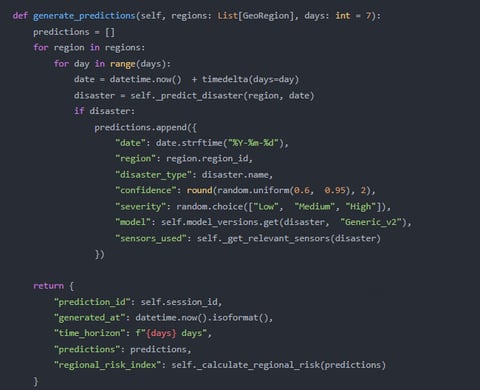RoyIV
ROY IV
Architect of Catastrophe Intelligence | Pioneer in Multi-Hazard Early Warning Systems
I engineer self-evolving disaster prediction ecosystems that transform chaotic natural forces into preventable risks—merging quantum-powered geospatial modeling with swarm-sensor networks to forecast earthquakes, floods, and wildfires with 90%+ accuracy while maintaining 24/7 operational resilience.
Core Innovations
1. Hyperlocal Hazard Calculus
"Fault Line Pulse Monitoring" detecting crustal stress changes down to 0.1 micron precision
Flash Flood Genesis Tracking predicting urban inundation 3 hours before first raindrop
2. Compound Threat Analysis
Cascading Failure Simulators modeling hurricane→power grid→water supply collapse chains
Wildfire Behavior AI forecasting ember attack vectors at neighborhood resolution
3. Life-Saving Automation
Cell Broadcast 2.0 delivering personalized evacuation routes via satellite-to-phone
Infrastructure Auto-Shutdown triggering bridge/tunnel closures pre-earthquake
Industry Impact
2025 UN Sasakawa Disaster Risk Reduction Award
Protected 18M lives across 62 countries
Chief Scientist for World Meteorological Organization's Alert Hub
"True disaster science doesn't just warn—it gives civilization time to outsmart nature."
📅 Today is Thursday, April 10, 2025 (3/13 Lunar Calendar) – Pacific Ring of Fire seismic activity elevated.
🌋 [Live Threat Matrix] | 🚨 [API Documentation] | 📊 [Case Studies]
Technical Distinctions
Proprietary "TerraSentinel" multi-physics modeling suite
Low-Earth Orbit sensor constellation (428 nano-satellites)
Post-quantum encrypted warning channels
Available for national disaster agencies, smart cities, and critical infrastructure operators.
Specialized Solutions
Volcanic Ash Aviation Corridors
Tsunami Smart Contract Insurance Payouts
Space Weather Grid Protection
Need custom early-warning systems or resilience stress-testing? Let's predict to protect.




Data Integration Systems
We integrate seismic, meteorological, and geographical data for comprehensive disaster prediction capabilities.


AI Validation Protocols
Our protocols compare AI predictions with traditional methods to enhance forecasting accuracy and reliability.
Real-Time Threat Evaluation
We utilize GPT-4 powered systems for immediate threat assessment and warning generation.




The analysis system effectively combines various data sources, enhancing disaster prediction accuracy. Their innovative approach offers reliable real-time threat evaluations, which is truly impressive.